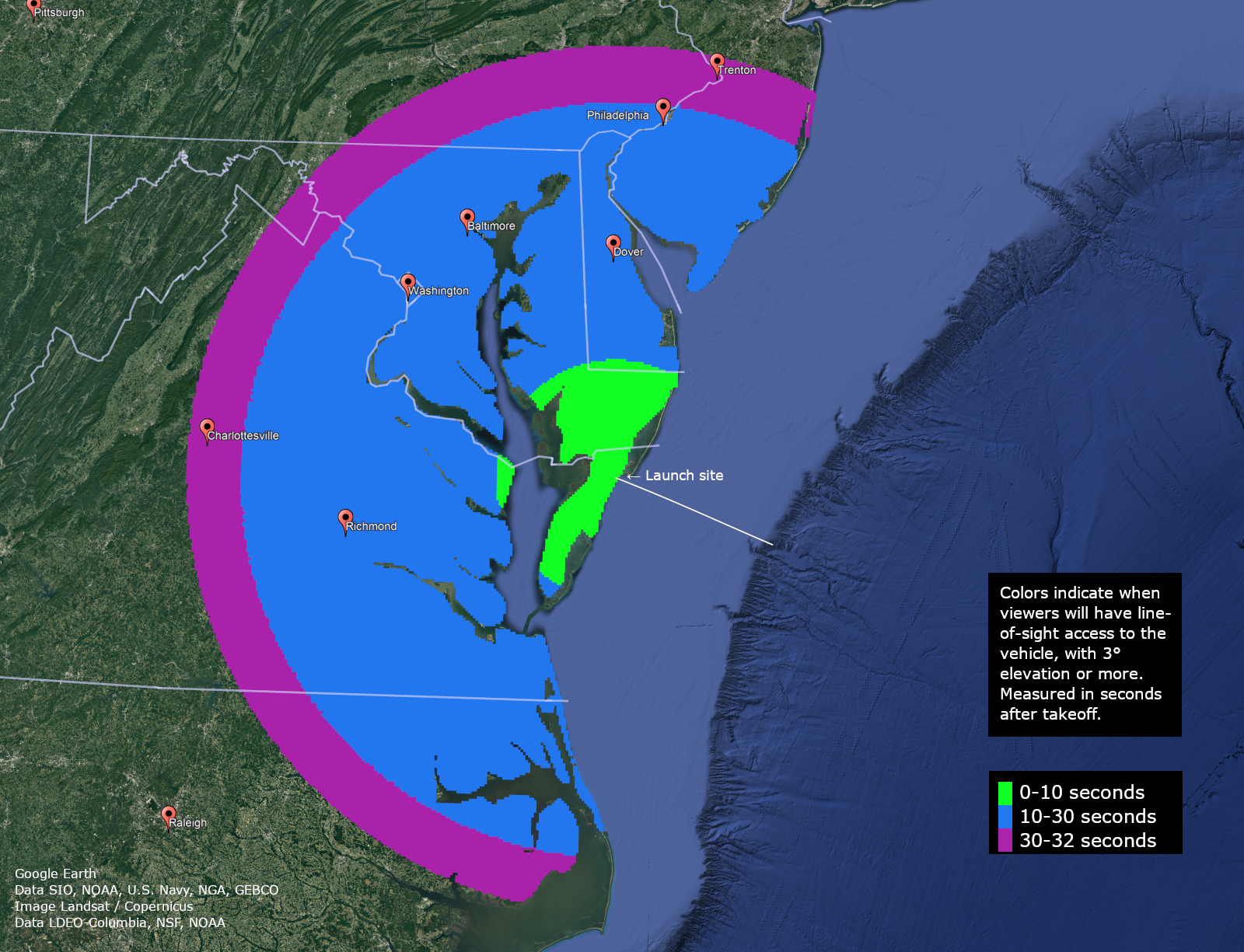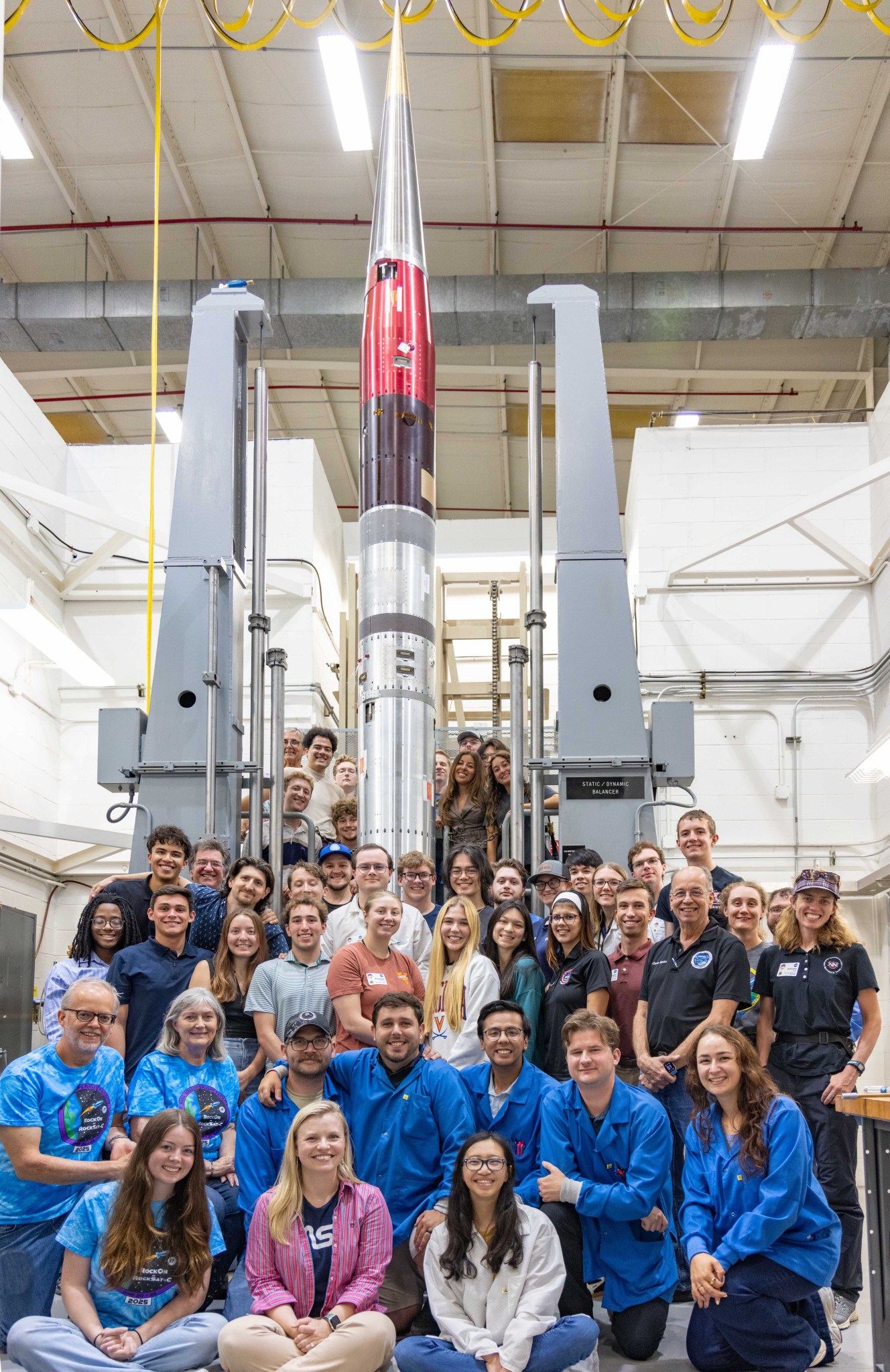NASA Wallops Flight Facility Rocket to Carry University Student Experiments
A sounding rocket carrying experiments developed by eight student teams is scheduled to launch from NASA’s Wallops Flight Facility in Virginia on Tuesday, Aug. 12, for the RockSat-X mission.
The Terrier-Improved Malemute rocket is expected to reach an altitude of about 100 miles (162 kilometers) before descending by parachute into the Atlantic Ocean to be recovered. The launch window for the mission is 6 a.m.-9 a.m. EDT, Aug. 12, with backup days of Aug.13, 14, and 15. The Wallops Visitor Center’s launch viewing area will open at 5 a.m. for the public to watch the launch. A livestream of the mission will begin 15 minutes before launch on the Wallops YouTube channel. Launch updates are also available via the Wallops Facebook and X social pages. The launch may be visible in the Chesapeake Bay region.
The experiments were developed by university and community college teams as a part of NASA’s RockSat programs.
“The RockSat program provides NASA-unique technical training and authentic, hands-on experiences, that prepare and equip students to enter the United States’ aerospace industry,” said Victoria Stoffel, Wallops STEM team lead.
RockSat-X 2025 flight projects:
- University of Alabama Huntsville is flying a spacecraft to demonstrate attitude control systems, a deployable heat shield that generates electricity, solar panels, and a communications relay unit. This test will examine the potential of producing electrical energy by harnessing the heating experienced on reentry of the vehicle, as well as performing biological experiments. The spacecraft is called ICARUS – Induced Charging from Atmospheric Re-Entry by a University spacecraft.
- College of the Canyons will test LiDAR scanning in space to detect structural anomalies in spacecraft and evaluate self-stabilizing gyroscope technology in a deployed capsule.
- University of Delaware’s experiment will use a Langmuir probe to measure how plasma responds to different electrical conditions, analyzing current-voltage graphs to determine plasma temperature and density.
- University of Hawaii Community Colleges’ experiment will launch a small sublimation rocket using camphor as propellant to measure its specific impulse (efficiency), along with an electronic payload. This research is part of Project Imua, a STEM-centered collaboration effort between Honolulu Community College & Windward Community College.
- Northwest Nazarene University’s experiment will deploy a payload featuring an ejector and robotic arm designed to track and capture objects in space.
- University of Puerto Rico’s experiment will use advanced sensors to create a detailed environmental profile of the low-latitude atmosphere from ground level to 160 km, measuring various habitability parameters.
- University of Virginia will test a low-cost, deployable hypersonic flight system while validating the performance of avionics software and data systems for future flight testing. They plan to use this miniature spacecraft technology to acquire reentry data that could improve future full-scale hypersonic aircraft designs. The students call their foot-long craft “HEDGE,” for Hypersonic ReEntry Deployable Glider Experiment.
- Virginia Tech’s experiment, MiRV, will test radio communications and evaluate a re-entry vehicle design using a small CubeSat-sized capsule that records temperature, pressure, and movement data.
NASA’s Sounding Rocket Program is conducted at the agency’s Wallops Flight Facility, which is managed by Goddard Space Flight Center in Greenbelt, Maryland. NASA’s Science Mission Directorate- Heliophysics Division manages the sounding rocket program for the agency.




























